While we all dream of a yard filled with majestic trees, summer shade, and colorful fall foliage, this offers some challenges for tiny yards. As much as you may like to think about growing a mighty oak fit with a tire swing in your backyard, this isn’t possible if you have small, outdoor space. Luckily, there are trees for small yards that enhance small spaces with spring flowers, green shade, and fall color.
There are various trees to suit your needs, whether you desire trees for flowers, privacy, colorful foliage, or red fruits. Some of the best trees are dwarf varieties of your favorites that are easy to grow and maintain.
It’s surprising how many trees are perfect for growing in small areas. There are dogwood, crabapple, maple, crape myrtle, and serviceberry trees, and more, each with a distinct characteristic. Whatever your fancy, choosing a small tree is easier than you think.

- Landscaping a Small Yard with Trees
- What are the Benefits of Growing Trees in my Yard?
- Which Types of Trees are Best for Small Spaces?
- Where Should I Plant Trees in my Yard?
- Are Trees Hard to Maintain?
- Dogwood (Cornus)
- Saucer Magnolia (Magnolia X soulangeana) – Flowering Trees for Small Yards
- Crabapple (Malus)
- Lilac (Syringa) – Trees with Highly Fragrant Flowers
- Eastern Redbud (Cercis canadensis)
- Crepe Myrtle (Lagerstroemia) – Trees with Summer and Fall Beauty
- Japanese Maple (Acer palmatum)
- Serviceberry (Amelanchier) – Slow-Growing Tree with Edible Fruit
- Cockspur Hawthorn (Crataegus crus-Galli)
- Pawpaw (Asimina triloba) – Tropical-Looking Tree for Edible Landscaping
- Red Buckeye (Aesculus Pavia)
- Mimosa (Albizia julibrissin) – Tree with a Tropical Appearance and Captivating Flowers
- Japanese Stewartia (Stewartia pseudocamellia)
- Golden Chain Tree (Laburnum) – Distinctive Trees for Small Landscapes
Landscaping a Small Yard with Trees
It’s easy to feel a bit of dismay while surveying your yard for growing trees if your space is smaller than you desire. Don’t worry, not only are there many trees that are perfect for your outdoor space, but they relish it, as well.
Determine whether you want evergreens, fast growing pine trees, or other varieties to give your yard the look you want. The choices are almost endless.
Choose from very fast growing evergreen trees, slower growers that fit in a large container, or a combination for variety and interest.
What are the Benefits of Growing Trees in my Yard?
Growing trees has more benefits than you may realize, but we’ll lay out a few of them. Trees are a natural form of protection for your home. They cool you off during hot summer days and lower the cooling costs in your house.
Trees also provide visual appeal to spaces with spring flowers, summer green leaves, and vibrant fall colors. The canopy gives birds a place to nest, furry critters a place to hide, and flowering trees attract pollinators.
Which Types of Trees are Best for Small Spaces?
The first step in choosing miniature trees for landscaping purposes in your yard is to measure the area around your home. Compare the mature size of your favorite trees to the square footage of the space to ensure they don’t outgrow their welcome.
Check the USDA hardiness zone for the trees and compare them to your area. Decide whether you desire flowers or fall foliage before browsing for a small tree.
Ornamental trees and some varieties of small evergreen trees are an excellent choice for small spaces, with their slow-growing habits. Dwarf trees are another alternative to larger trees and offer the same beautiful benefits.

Where Should I Plant Trees in my Yard?
Plant trees one-half of their mature size away from your home. Always check the area for septic tank placement and underground wires to prevent roots from causing havoc. Remember that a tree’s root system grows beyond its canopy.
Inspect the space around your home for natural light. If your favorite tree requires full sun to survive, plant it in an area where it receives 6 hours of direct sunlight daily.
Are Trees Hard to Maintain?
Plant your tree while it is dormant for optimal results. Once you establish the perfect spot in your yard for your new tree, dig a large but shallow hole.
Remove the tree from its pot or bag and place it into the hole at the proper height. Check that it is straight and fill the hole with dirt, pressing firmly and gently.
If necessary, stake the tree and place a decent amount of mulch around the base to prevent the soil from drying and eliminate weeds. Water it thoroughly and keep the soil moist without water-logging the hole. Water your tree weekly until it is established.
Dogwood (Cornus)
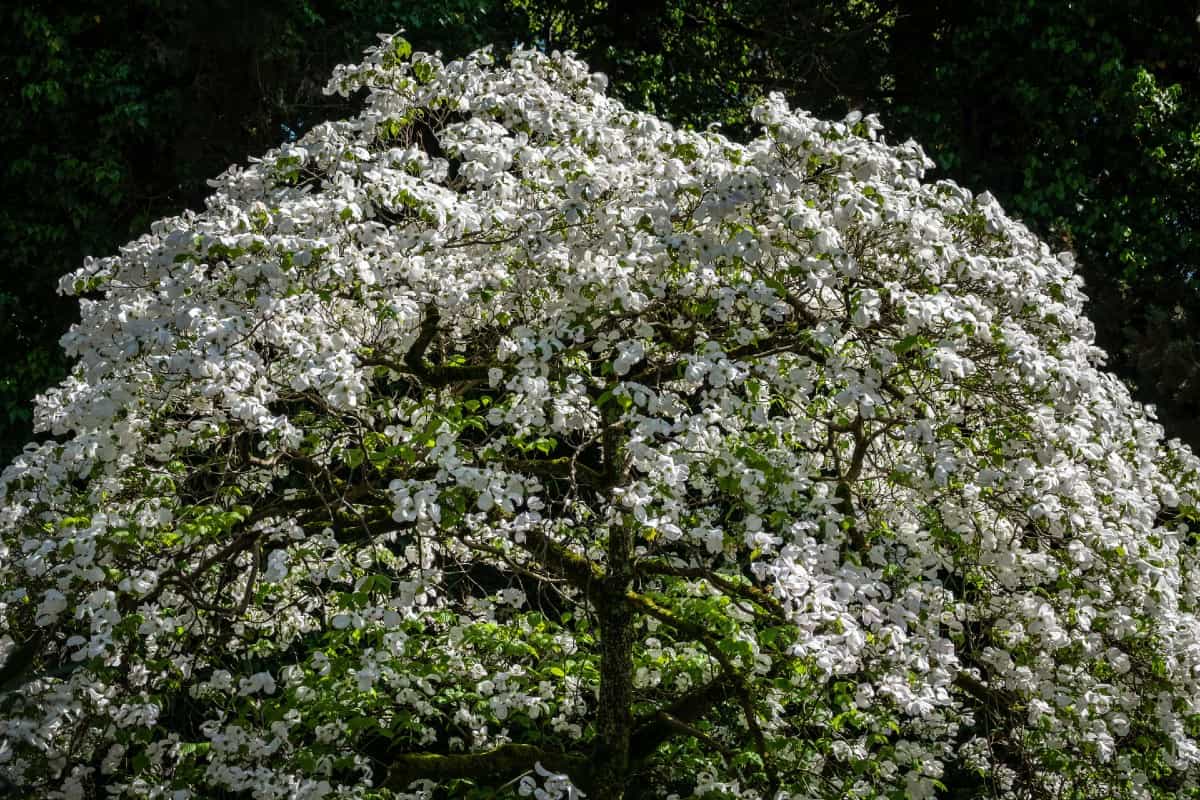
There are many dogwood trees, including common, flowering, and Kousa dogwood, and most of them are relatively small in size. They bloom white or pink flowers during the spring and summer and have colorful fall foliage and winter interest.
Small dogwood trees grow roughly 15 feet tall and wide and grow in hardiness zones 3 through 8. These small trees crave part to full sun, are easy to maintain, and draw many bird species to the yard.
Saucer Magnolia (Magnolia X soulangeana) – Flowering Trees for Small Yards

This popular flowering tree produces huge blooms in early spring before the leaves emerge. The flowers are pinkish-white in color and are a stunning sight to see early in the season. The tree has a rounded crown, making it an excellent landscape specimen.
The saucer magnolia grows well in full or filtered sun, reaches a mature size of 20 to 25 feet tall, and is easy to train. It grows well in zones 4 through 9 and prefers well-drained, slightly acidic soil.
Crabapple (Malus)

The crabapple tree is a favorite for adding interest to small yards. Its spring-blooming pom-pom shaped pink or white flowers are fragrant and attract pollinators, while the colorful fruit is a vital winter food for birds.
These trees crave full sun and well-drained soil to grow. Smaller species of crabapple trees grow 8 to 10 feet tall and are hardy in zones 3 through 8. They are great for privacy and are easy to grow.
Lilac (Syringa) – Trees with Highly Fragrant Flowers
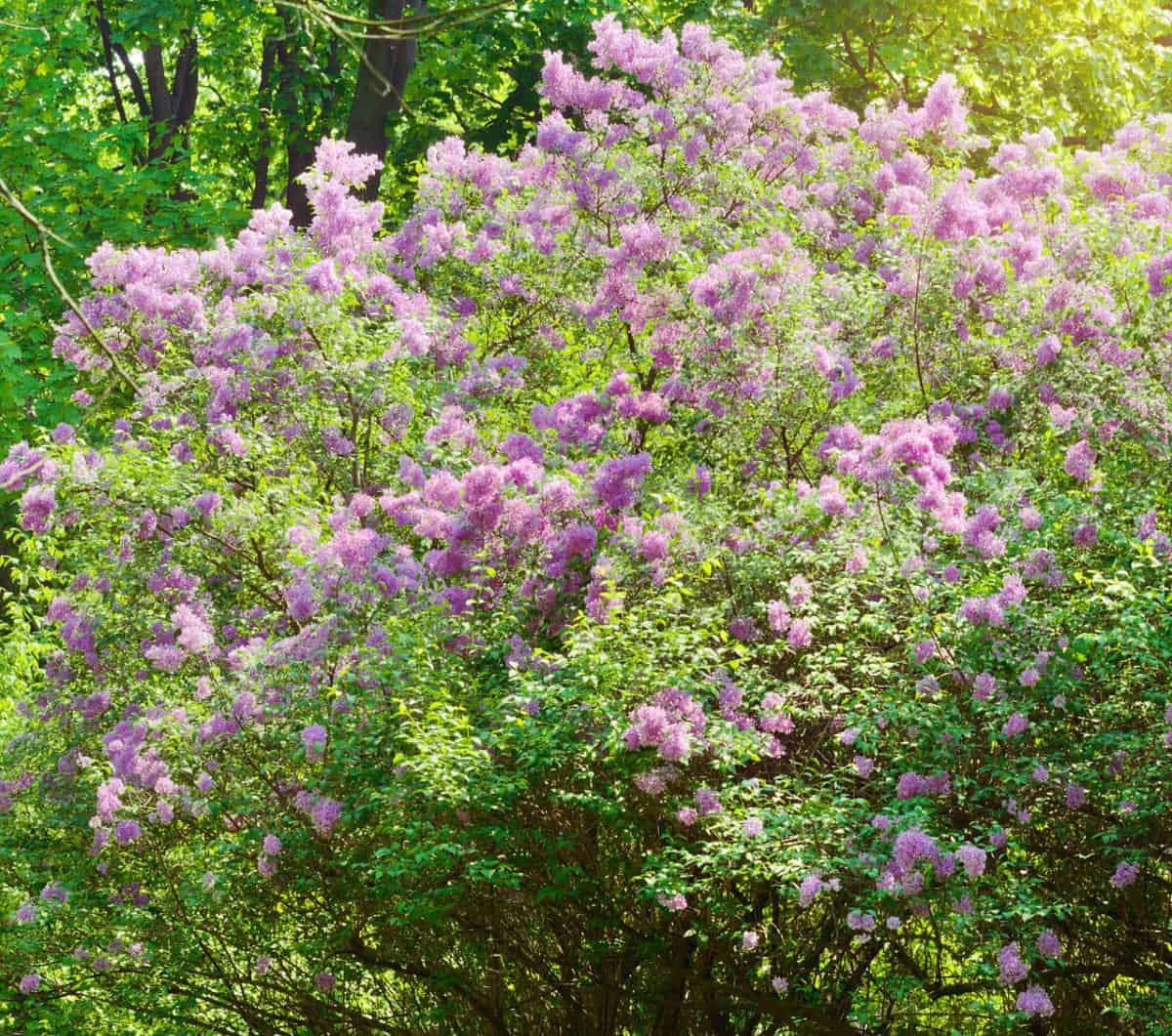
Lilacs are a famous tree or shrub, loved for their heavenly fragrance and colorful flowers. With so many kinds to choose from, there is bound to be a favorite among the bunch.
They produce clusters of blue, purple, white, and pink flowers in the spring and summer, and are a magnet for butterflies and hummingbirds.
The common lilac is ideal for small areas, with its mature height of 8 to 12 feet and spread of up to 10 feet. There are also dwarf varieties that only reach 4 to 6 feet in height. They enjoy sunny areas and thrive in zones 3 through 7.
Eastern Redbud (Cercis canadensis)

The Eastern redbud tree gifts the yard with pink or white flowers in very early spring before the leaves grow. The foliage varies in color, from orange and gold to burgundy with a vase-shaped spreading habit.
This easy-to-grow tree is perfect if you’re looking for a shade tree for a small yard with its mature height of 20 feet. Eastern redbud trees prefer part to full sun and are hardy in zones 5 through 9. They attract both birds and early butterflies to the yard.
Crepe Myrtle (Lagerstroemia) – Trees with Summer and Fall Beauty
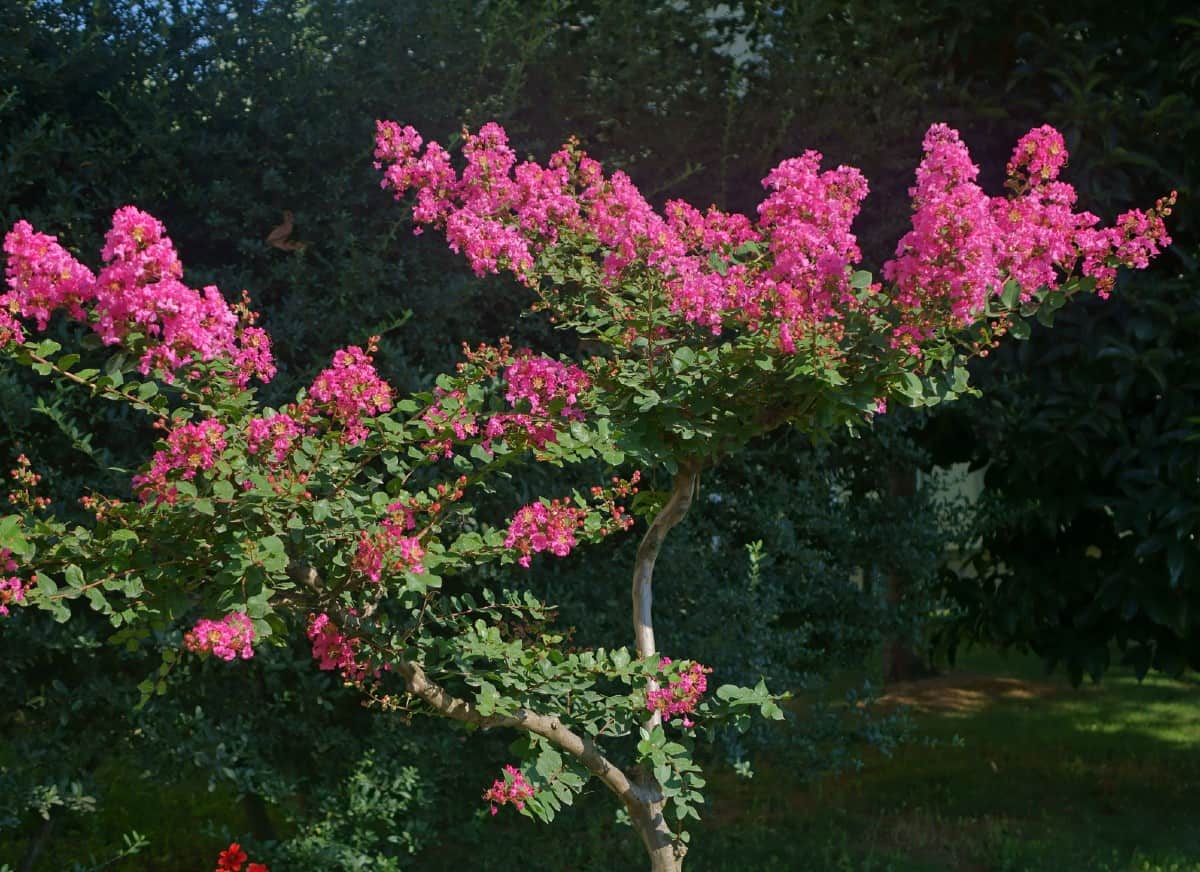
Crape myrtle trees are commonly called lilacs of the south with their lovely white, pink, purple, and red summer flowers. After the flowers fade, the foliage takes on a yellow, orange, and red tint during the fall for a spectacular show.
These sun-loving trees are hardy in zones 6 through 9. They are both drought and heat tolerant after establishing and grow anywhere from 3 to 10 feet tall, depending on the type. They are fast-growing trees with a long life-span.
Japanese Maple (Acer palmatum)
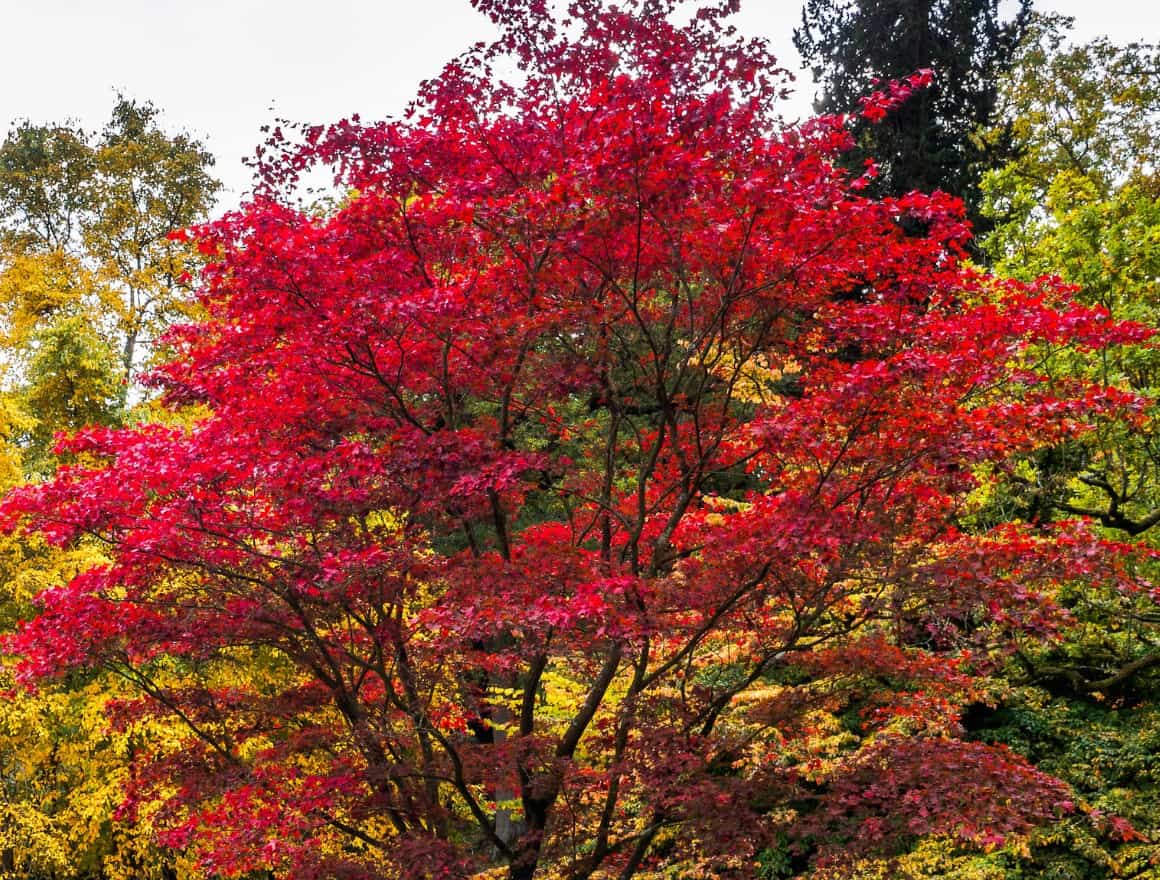
The Japanese maple is one of the best trees for small spaces. It has a graceful shape with striking foliage that starts red in the spring, turning bronze in late summer, and ending up being trees with orange leaves during fall.
These trees enjoy filtered sun and have a mature size of 15 to 25 feet tall and wide. They thrive in hardiness zones 5 through 9 and prefer moist, well-drained soil. The Japanese maple has a rounded v-shape and is a great addition to almost any yard.
Japanese maple is one of the trees that can grow in pots, too. Choose the container carefully and repot when needed.
Serviceberry (Amelanchier) – Slow-Growing Tree with Edible Fruit
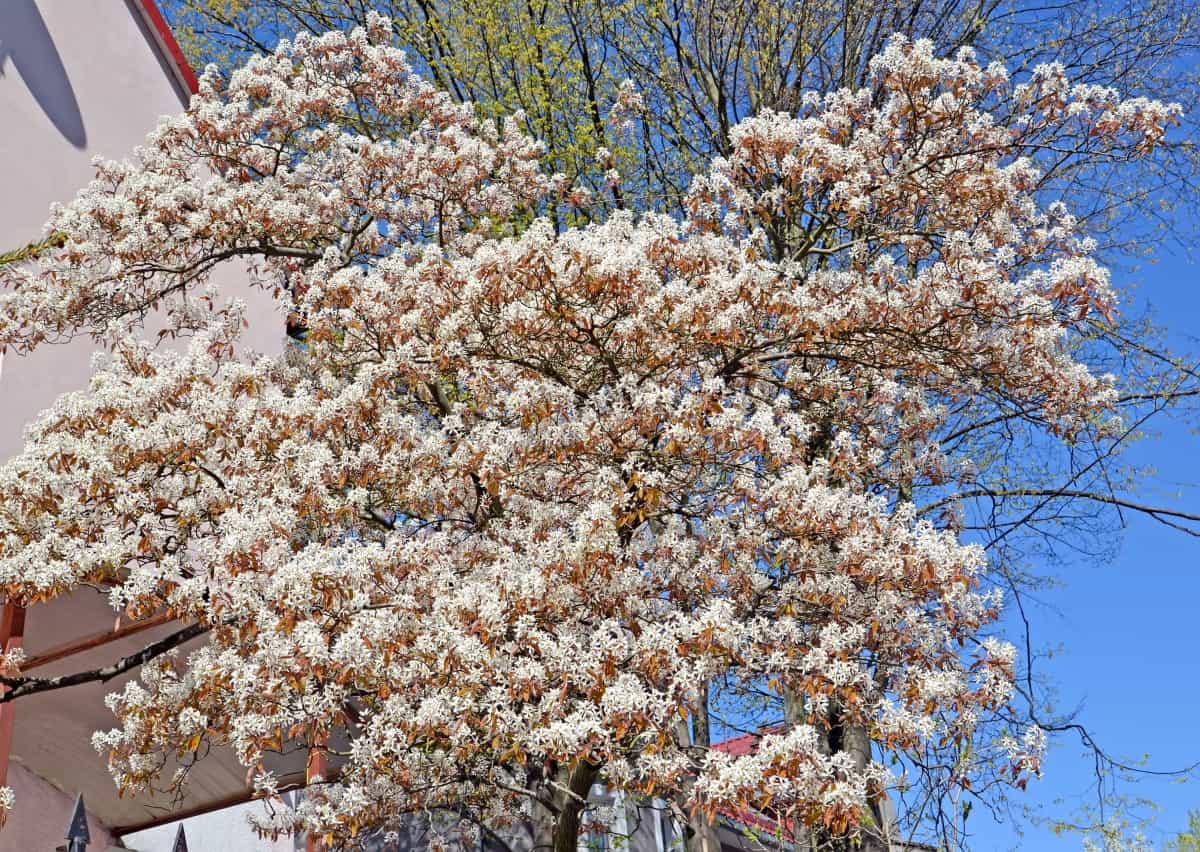
These trees grow white flowers before the foliage appears, followed by edible berries. Their blue/green leaves turn orange and red during the fall. They have a non-invasive root system, making them a great choice for small landscapes.
Serviceberry trees are low-maintenance, require little pruning, and grow in full or filtered sun. These slow-growers have a mature height of 8 to 20 feet tall and 4 to 15 feet wide, and grow in hardiness zones 2 through 9.
Cockspur Hawthorn (Crataegus crus-Galli)

Cockspur hawthorn trees have spring white flowers, colorful orange foliage during the fall, and long-lasting fruits. The fruits persist into the winter and are a favorite food for many birds.
The size of this tree is ideal for small areas with its mature size of 15 to 25 feet. However, it produces prickly thorns on the stems, so plant with caution if you have children and pets. Cockspur hawthorn enjoys sunny areas of hardiness zones 3 through 7.
Pawpaw (Asimina triloba) – Tropical-Looking Tree for Edible Landscaping
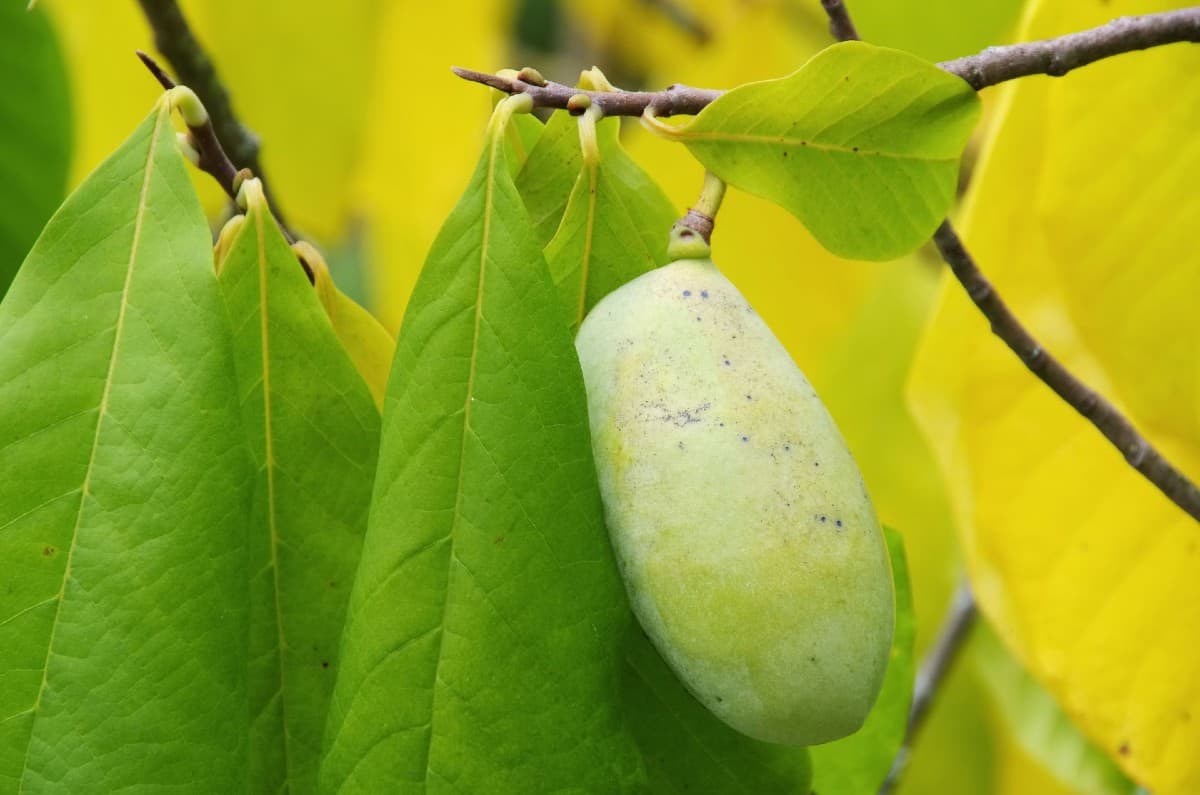
This ornamental tree has a tropical feel with its long, oval leaves, purple spring flowers, and small, pyramidal shape. It produces edible fruit that tastes great fresh or in desserts. This tree is unique in appearance, and it is a host to a variety of butterflies to the yard.
The pawpaw tree forms multiple trunks and grows 15 to 30 feet tall and wide. It grows in both full sun and full shade and is hardy in zones 5 through 9. This broad-leaved deciduous tree tolerates cold temperatures with ease.
Red Buckeye (Aesculus Pavia)
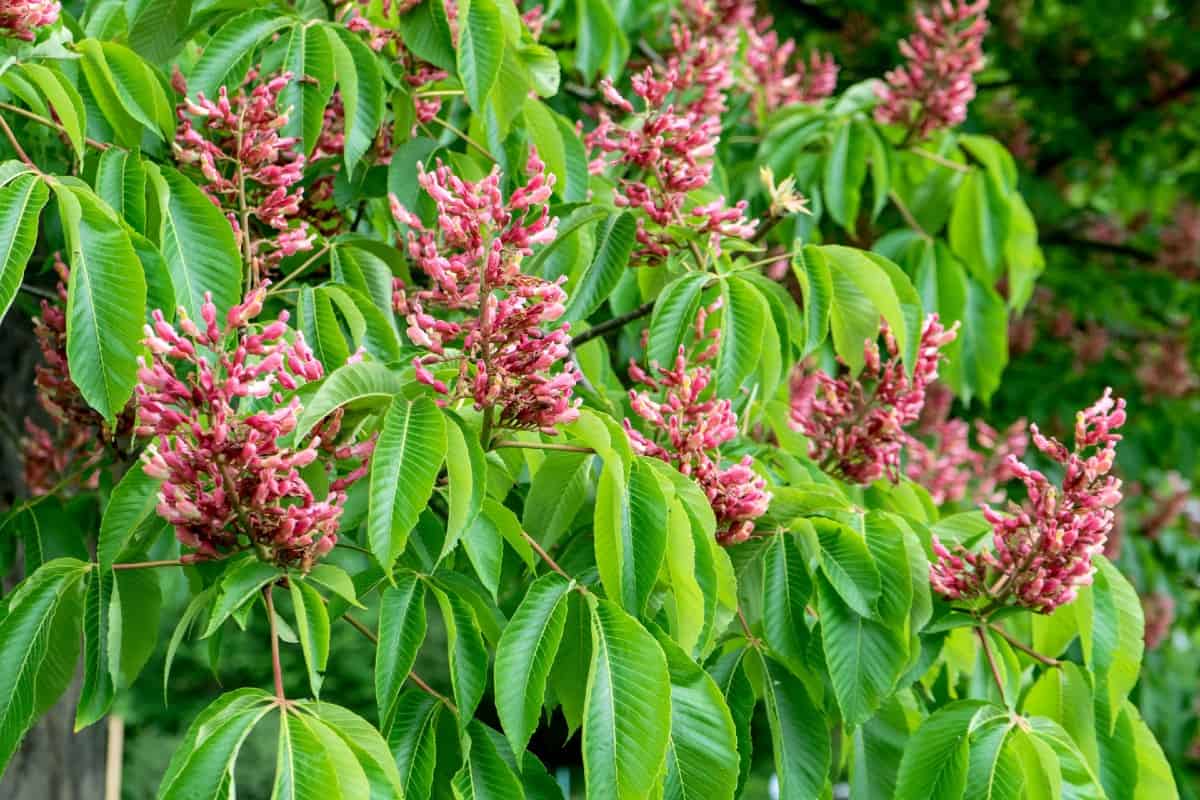
There are many species of the red buckeye, and this tree is a stunning performer in the yard. Its spring-time, bold red flowers last for weeks and attract butterflies and hummingbirds to the area.
This tree is tolerant of full sun or part shade but demands some sun protection during hot summer days.
It is a slow grower with a mature height and canopy spread of 15 feet. The red buckeye tolerates medium moist and well-drained soil and is perfect for USDA hardiness zones 4 through 8.
Use these attractive trees to block neighbors prying eyes from the backyard or to hide the view of the street.
Mimosa (Albizia julibrissin) – Tree with a Tropical Appearance and Captivating Flowers

If you fancy a tree with unique qualities and appearance, then the mimosa tree is perfect for you. It has a tropical look with large, fern-like leaves and produces exotic and fragrant, thread-like dainty pink flowers.
While this tree is slightly larger than 20 to 40 feet tall, it is a smart choice for yards on the small side. Mimosa trees are heat and drought tolerant and grow well in part shade to full sun. They tolerate consistent moisture and are hardy in zones 6 through 9.
Japanese Stewartia (Stewartia pseudocamellia)

This specimen tree is perfect as a focal point in the yard with its white summer flowers, colorful fall foliage, and winter interest. You rarely have to prune it, and it’s nearly disease and insect-free.
It is a slow-growing tree that reaches 15 to 30 feet tall and 20 to 25 feet wide, making it a good fit for small landscapes. Japanese stewartia thrives in 5 through 8 and grows well in part sun, but needs afternoon protection in hot climates.
Golden Chain Tree (Laburnum) – Distinctive Trees for Small Landscapes
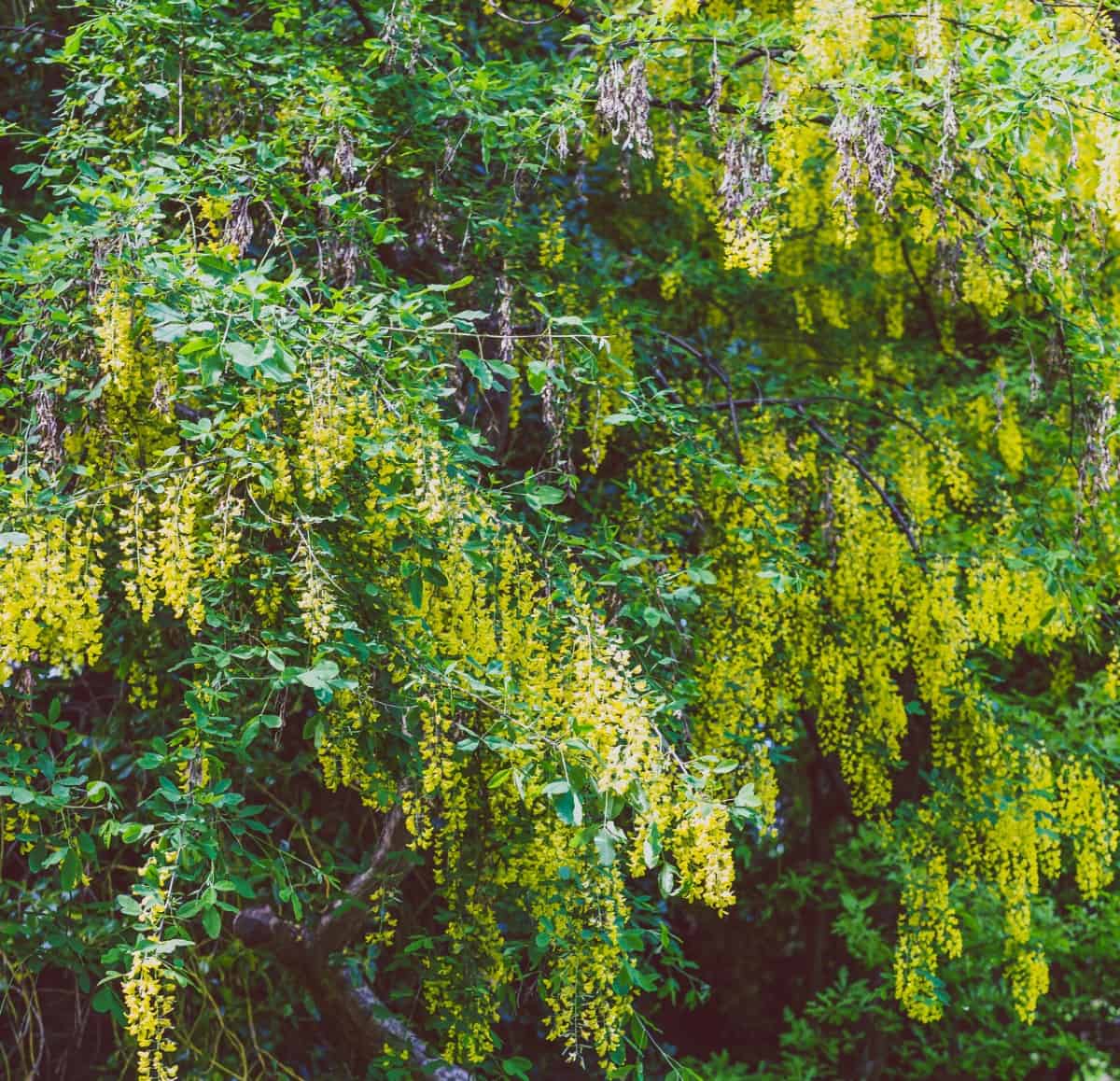
The distinctive green bark of the golden chain tree makes it stand out from the rest. It grows drooping, clover-like leaves, and clusters of long bright yellow flowers in late spring.
Golden chain trees require protection from the wind and need staking while young. They grow approximately 15 to 25 feet in height and develop quickly in zones 5 through 7. Plant these trees in a full sun or part shade location and rich, well-drained soil.
While small yards are a challenge when it comes to gardening and landscaping, growing the perfect plants and trees for this space is not impossible.
It’s essential to choose wisely while shopping at your local nursery. Ornamental and dwarf trees are plentiful and provide your yard with flowers and stunning fall color without taking over the area.
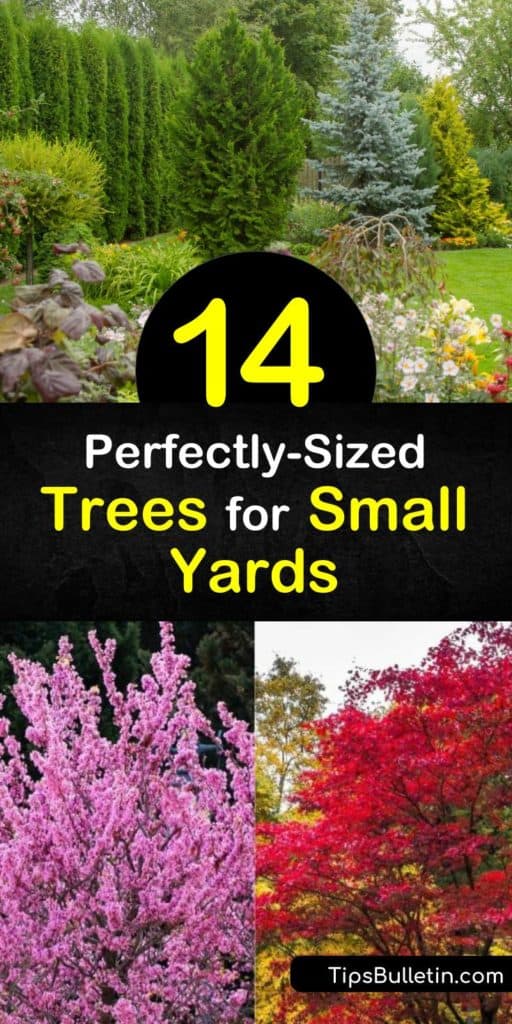
Creating a beautiful landscape in your outdoor space with trees for small yards is a great way to add beauty to your home, so why not share our small yard tree guide with your friends on Facebook and Pinterest?